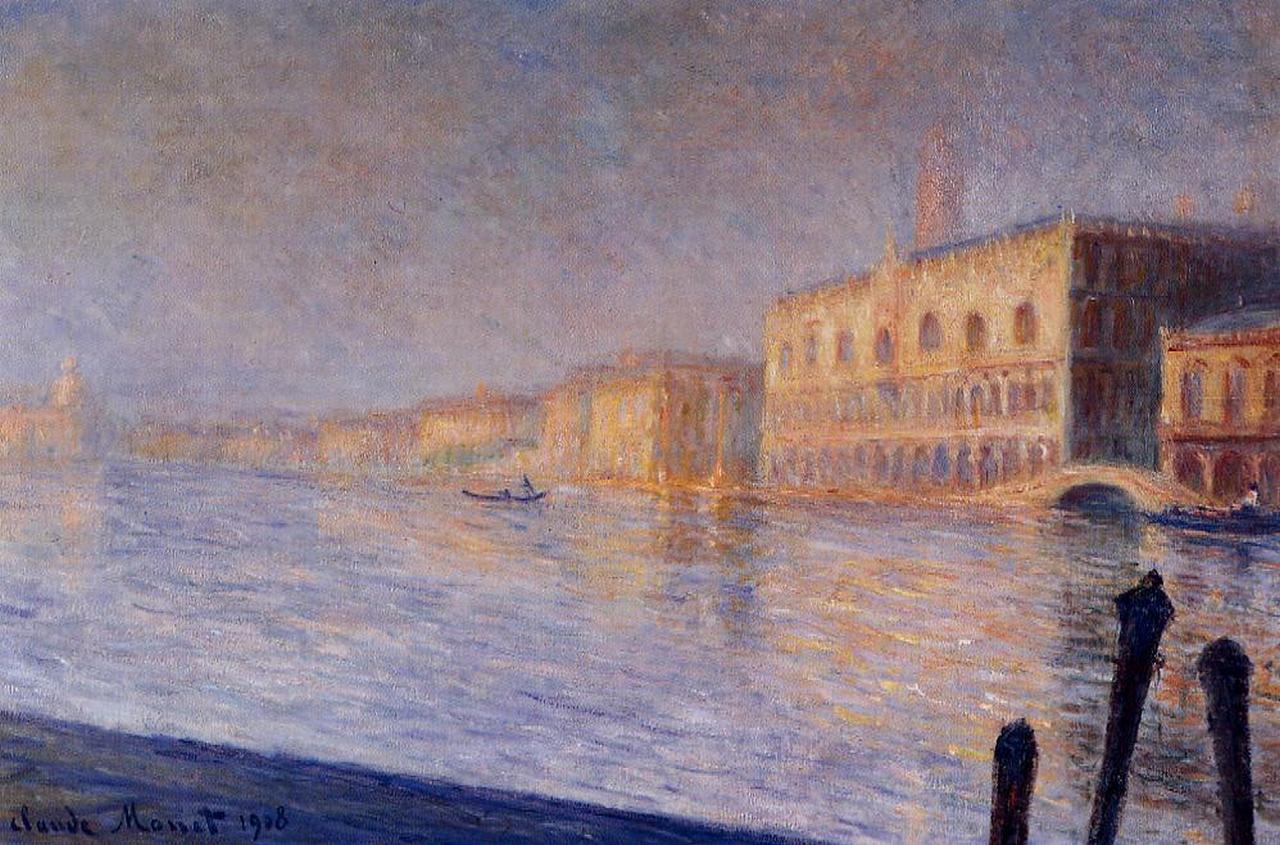artsMonet.com
Claude Monet 1840-1926
Claude Monet - The Doges' Palace 1908
 The Doges' Palace |
Catalogue Note from Sotheby's
Monet’s spectacular view of the Palazzo Ducale on the Grand Canal belongs to the extraordinary series he completed in the fall of 1908 in Venice. Painted from the south-east vantage of a floating pontoon, the scene depicts the Palace, with its Byzantine fenestrations adorning the façade, alongside the Ponte della Paglia and the prison building on the right. To the left of the palace is the entrance to Saint Mark’s square, and the silhouette of the bell tower and can be seen in the open space. Through a Renaisannce-inspired sfumato technique Monet conjures the briny mist of the Adriatic, and the oblique pontoon and moorings convey the lulling motion of its current. This picture marks one of the rare instances that Monet painted from the vantage of a gondola, capturing fleeting light that colored this dramatic scene.
Monet arrived with his wife Alice on October 1st at the invitation of Mary Young Hunter, a wealthy American who had been introduced to the couple by John Singer Sargent. Although he had been reluctant to leave behind the motifs of his Giverny garden that had all but consumed his work, he could not resist the opportunity to see the architectural splendors of the lagoon city and the new and formidable challenges that it would present. At first, the visual splendor of the city astounded him, and he feared that he was too old and ill-equipped to capture its pageantry. His creative paralysis subsided by October 7, and he commenced the most successful series campaigns of his career. In his study of Monet's work and the Mediterranean, Joachim Pissarro has given a detailed account of Monet's working schedule while he was in Venice: “After so much procrastination, Monet soon adopted a rigorous schedule in Venice. Alice’s description of his work day establishes that from the very inception of his Venetian campaign, Monet organized his time and conceived of the seriality of his work very differently from his previous projects. In Venice, Monet divided his daily schedule into periods of approximately two hours, undertaken at the same time every day and on the same given motif. Unlike his usual methods of charting the changes of time and light as the course of the day would progress, here Monet was interested in painting his different motifs under exactly the same conditions. One could say that he had a fixed appointment with his motifs at the same time each day. The implication of this decision is very simple; for Monet in Venice, time was not to be one of the factors of variations for his motifs. Rather, it was the 'air', or what he called 'the envelope' - the surrounding atmospheric conditions, the famous Venetian haze - that became the principal factor of variation with these motifs” (J. Pissarro, ibid., p. 50).
Monet stayed for the first two weeks of his sojourn as Hunter’s guest at the Palazzo Barbaro, which belonged to a relation of Sargent - Mrs Daniel Sargent Curtis. He then relocated to the Grand Hotel Britannia on the northern bank of the Grand Canal, where he remained until his departure on December 7. From his balcony at the Palazzo Barbaro he could see directly across to the Palazzo da Mula, Palazzo Dario and the Palazzo Contarini, but the Britannia offered even more spectacular views. From this vantage he had clear views of the church of San Giorgio Maggiore and Palazzo Ducale, the city’s most famous landmark, which had featured in the immortal works of Titian and Canaletto. While several of Monet’s depictions of the Palazzo depict it from the southwest, the present canvas depicts the palace from the north, offering a dramatic view of the Lions of Piazza San Marco in the distance. What is so remarkable about this painting is the abrupt depiction of the pontoon in the foreground, which heightens the perspectival drama of the composition.